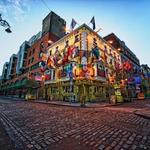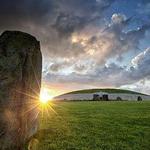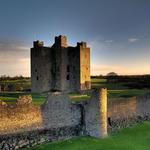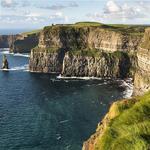Dorian & Conor
Things To Do

Dublin City
Dublin, capital of the Republic of Ireland, is on Ireland’s east coast at the mouth of the River Liffey. Its historic buildings include Dublin Castle, dating to the 13th century, and imposing St Patrick’s Cathedral, founded in 1191. City parks include landscaped St Stephen’s Green and huge Phoenix Park, containing Dublin Zoo. The National Museum of Ireland explores Irish heritage and culture.

Brú na Bóinne - Newgrange Monument
Brú na Bóinne, which means the ‘palace’ or the ‘mansion’ of the Boyne, refers to the area within the bend of the River Boyne which contains one of the world’s most important prehistoric landscapes. It is located close to the east coast of Ireland approximately 40 km north of Dublin city, about 8km west of the medieval town of Drogheda and about 5km east of the village of Slane. Newgrange is a Stone Age (Neolithic) monument in the Boyne Valley, County Meath, it is the jewel in the crown of Ireland's Ancient East. Newgrange was constructed about 5,200 years ago (3,200 B.C.) which makes it older than Stonehenge and the Great Pyramids of Giza. https://www.irishcentral.com/roots/history/magic-and-genius-of-newgrange-never-fails-to-astound-on-winter-solstice http://www.worldheritageireland.ie/bru-na-boinne/visitor-information/

Trim Castle
http://www.heritageireland.ie/en/midlands-eastcoast/trimcastle/ Trim Castle, the largest Anglo-Norman castle in Ireland, was constructed over a thirty-year period by Hugh de Lacy and his son Walter. Hugh de Lacy was granted the Liberty of Meath by King Henry II in 1172 in an attempt to curb the expansionist policies of Richard de Clare, (Strongbow). Construction of the massive three storied Keep, the central stronghold of the castle, was begun c. 1176 on the site of an earlier wooden fortress. This massive twenty-sided tower, which is cruciform in shape, was protected by a ditch, curtain wall and moat.
